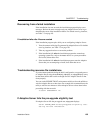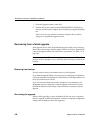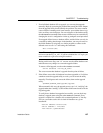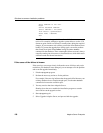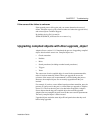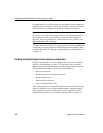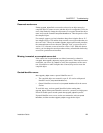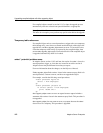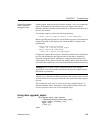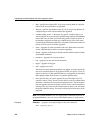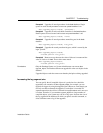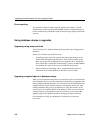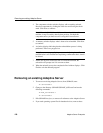
CHAPTER 7 Troubleshooting
Installation Guide 113
Determining whether
select * should be
changed in views
If dbcc upgrade_object reports the existence of select * in a view, compare the
output of
syscolumns for the original view to the output of the table, to
determine whether columns have been added to or deleted from the table since
the view was created.
For example, suppose you have the following statement:
create view all_emps as select * from employees
Before upgrading the all_emps view, use the following queries to determine the
number of columns in the original view and the number of columns in the
updated table:
select name from syscolumns
where id = object_id("all_emps")
select name from syscolumns
where id = object_id("employees")
Compare the output of the two queries. If the table contains more columns than
the view, and retaining the pre-upgrade results of the
select * statement is
important, change the
select * statement to a select statement with specific
column names. If the view was created from multiple tables, check the columns
in all tables that comprise the view and rewrite the
select statement if necessary.
Warning! Do not execute a select * statement from the view. Doing so
upgrades the view and overwrites the information about the original column
information in syscolumns.
Another way to determine the difference between the columns in the view and
in the new tables is to run
sp_help on both the view and the tables that comprise
the view.
This comparison works only for views, not for other compiled objects. To
determine whether
select * statements in other compiled objects need to be
revised, review the source text of each compiled object.
Using dbcc upgrade_object
Syntax dbcc upgrade_object [ ( dbid | dbname
[, ['database.[owner].]compiled_object_name' |
'check' | 'default' | 'procedure' | 'rule' |
'trigger' | 'view'
[, 'force' ] ] ) ]
where:



